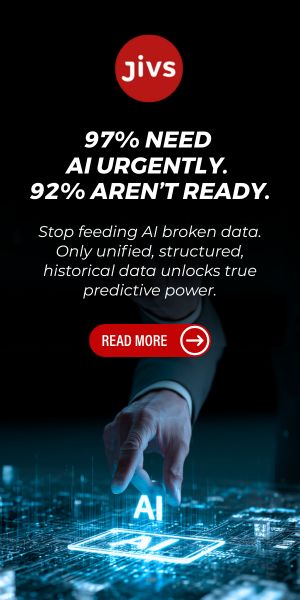In the era of digital transformation, artificial intelligence (AI), data analytics, and automation are not merely buzzwords—they are strategic imperatives. The convergence of these technologies is reshaping industries, redefining competitive advantage, and demanding a recalibration of executive decision-making. For C-level leaders, crafting a comprehensive strategy for AI, data, and automation is no longer optional. It is the linchpin of sustainable enterprise value.
Yet for all the promise, the path to adoption is fraught with complexity. From integrating generative and agentic AI systems to navigating governance, compliance, and workforce trans formation, the execution challenge is real. This article provides a practical roadmap for executives seeking to align cutting-edge technologies with business priorities, regulatory requirements, and long-term ROI.
AI’s impact is inseparable from the data it draws on and the automated systems through which it operates. AI interprets data; automation acts on those insights. The interplay is crucial. “Think of AI as the brain, data as the senses, and automation as the body,” said the CIO of a global logistics firm. “Together, they create a learning, adaptive enterprise.”
Agentic AI—systems capable of autonomous decision-making within de fined constraints—represents the next frontier. Unlike traditional AI models, which require constant human supervision, agentic AI operates with goal orientation, continuously learning and optimizing.
AI, data, and automation are not silver bullets—they are force multipliers.
Large Language Models (LLMs) like GPT-4, Claude, and enterprise-specific variants are redefining knowledge work. From generating legal drafts to answering customer queries in natural language, LLMs promise not just automation but augmentation—an entirely new layer of digital capability.
Predictive analytics, meanwhile, provides foresight. It enables decision-makers to act preemptively, not reactively—forecasting everything from supply chain disruptions to customer churn.
AI adoption is not plug-and-play. A practical, four-stage framework ensures that deployment is grounded, scalable, and aligned with business strategy.
- Strategic Alignment & Business Case Development
- Define Use Cases: Prioritize areas where AI can deliver measurable impact—fraud detection, personalized marketing, dynamic pricing.
- Quantify ROI: Estimate returns using metrics aligned with business KPIs, such as cost-to-serve, conversion rates, or asset uptime.
- Assess Readiness: Conduct an organizational maturity assessment across data infrastructure, talent, and governance.
- Data and Infrastructure Readiness
- Data Quality and Accessibility: Ensure datasets are clean, integrated, and compliant with standards like GDPR and CCPA.
- Model Infrastructure: Choose between cloud, hybrid, or edge deployment. For high-performance workloads, consider vector databases and GPU acceleration.
- Vendor Strategy: Evaluate partnerships for model provisioning (OpenAI, Anthropic), orchestration platforms (Data Robot, H2O.ai), and infrastructure (AWS, Azure, GCP).
- Governance, Risk, and Compliance
- Ethical Guardrails: Establish principles around fairness, explainability, and accountability. Appoint an AI Ethics Officer.
- Model Auditing and Validation: Adopt tools for drift detection, adversarial testing, and interpretability (e.g., SHAP, LIME).
- Regulatory Alignment: Stay ahead of AI-specific legislation such as the EU AI Act and U.S. AI Bill of Rights.
- Deployment, Monitoring and Continuous Improvement
- Pilot Programs: Run limited-scope pilots to test efficacy and gather feedback. Use these to refine assumptions.
- MLOps and AIOps: Use DevOps-like practices for continuous deployment, versioning, and monitoring of AI systems.
- Human-in-the-loop Design: Integrate human oversight where necessary to maintain control and safety.
Governance isn’t a brake on innovation—it’s a necessary accelerant. Without it, AI initiatives risk collapse under scrutiny. A 2024 study showed that only 32% of executives feel “very confident” their AI is compliant and ethically sound. That’s a significant gap—and a call to action. Robust AI governance should include the following: Cross-Functional Councils in volving legal, compliance, IT, operations, and business units; Risk Heat Maps that map model and data risk across the enterprise; Third-Party Reviews, or regular audits to identify hidden biases, black-box models, or training data gaps; and Incident Management Plans, which are playbooks for managing AI related errors, from misclassification to hallucination.
“In highly regulated industries like healthcare or finance, governance can’t be an afterthought,” said a Chief Compliance Officer at a multinational bank. “It must be embedded from design to deployment.”
In these early days of the AI age, there are several myths that need to be debunked. The most significant myths are as follows:
MYTH 1: AI Delivers Immediate ROI
Reality: Strategic value often takes time to materialize. Short-term wins are possible, but transformative returns require integration, iteration, and cultural change. Recent reports suggest that only 8% of firms effectively scale AI. Why? Because they underestimate the time and investment needed for full adoption—including re-skilling, change management, and infrastructure. But beware of “death by proof-of-concept.” While ROI may not be immediate, have a plan to scale within a handful of use cases beyond the first few demonstrations of business impact.
MYTH 2: AI Will Eliminate More Jobs Than It Creates
Reality: AI changes jobs more than it erases them. It automates routine tasks but amplifies creative, strategic, and interpersonal functions. The World Economic Forum predicts that while 85 million jobs may be displaced by 2025, 97 million new roles will emerge—data scientists, AI trainers, compliance analysts, and more. Enterprises are investing in upskilling programs like IBM’s SkillsBuild and Google’s AI Career Certificate to bridge the gap.
MYTH 3: Ethics Slows Down Innovation
Reality: Ethics reduces friction, builds trust, and accelerates adoption. Take Microsoft’s Responsible AI framework—it didn’t slow its pace. It enabled them to move faster in regulated sectors like defense, education, and finance. Ethical AI builds a brand moat. Companies with clear, well-communicated AI values gain customer loyalty, employee engagement, and investor confidence.
Technology is only part of the equation when it comes to AI, data and automation. Success depends at least as much on human capital, organizational change management, skills development, talent acquisition and retention, and functional evolution. AI adoption must be sponsored from the top. CEOs and boards must signal its strategic importance and provide cover for experimentation. Transparent communication about AI’s purpose, potential, and limits can reduce fear and resistance. Empower employees as co-creators, not just end users. Cross-training employees in data literacy and AI fundamentals pays dividends. Encourage AI fluency across all departments—not just IT. Case in point: a major European telco launched an internal AI academy. Within a year, over 5,000 employees had completed courses, leading to 47 new AI-driven initiatives initiated from within business units.
You can’t manage what you can’t measure. C-level leaders must define success in AI not by experimentation, but by impact. Dashboards and OKRs should track AI initiatives alongside traditional performance metrics. Best practice is to review quarterly, iterate often.
Common KPIs associated with AI impact include:
- Operational Efficiency: Reduction in manual hours, error rates, or time-to-resolution.
- Customer Experience: Improvements in Net Promoter Score (NPS), retention, or personalization accuracy.
- Revenue Growth: Uplift from targeted marketing, dynamic pricing, or new AI-enabled services.
- Risk Mitigation: Fewer compliance breaches, faster anomaly detection, improved model explainability.
Agentic AI – referred to increasingly as the digital workforce – is gaining steam as potentially the most transformative AI application. By way of example, a global e-commerce platform recently deployed agentic bots to autonomously manage supply chain disruptions. These agents analyzed weather data, social media sentiment, and vendor performance to reroute shipments in real-time. The result? A 21% reduction in delayed orders, 14% savings in logistics costs, and a customer satisfaction boost of 11%. The initiative was so successful it’s now being replicated in other business functions. What made it work? Executive sponsorship, robust data infrastructure, and real-time monitoring. Plus, a fallback mechanism: human supervisors had override authority.
CxOs should be con templating the following questions now, in order to set their companies up to fully capitalize on the trans formative potential of AI, data and automation:
- Which parts of our business could benefit most from GenAI or agentic AI?
- Do we have a governance framework robust enough for emerging regulations?
- Are our data assets clean, connected, and compliant?
- What’s our talent strategy for AI? Are we hiring and upskilling at the right pace?
- How do we align AI projects with measurable business outcomes?
AI, data, and automation are not silver bullets—they are force multipliers. When guided by strategy, governed responsibly, and deployed with human-centered intent, they unlock transformative value. C-level leaders stand at a crossroads. The tools are ready. The frameworks are proven. What’s needed now is bold but disciplined execution. The winners in the AI era will be those who move not just fast, but wisely—aligning technological ambition with ethical stewardship and business impact. The time to lead is now.
What This Means for ERP Insiders
- Don’t get lost in the technical complexities of AI, data, and automation. C-level leaders must prioritize identifying specific business problems within the ERP system by focusing on defining clear use cases and quantifying the potential ROI using relevant business KPIs such as reduced order fulfillment time, increased customer retention and improved inventory accuracy. Moreover, whether those issues are supply chain inefficiencies, customer service bottlenecks, or financial reporting delays, organizations must ensure their AI and data plans align with the overall business strategy for those specific issues. This keeps initiatives grounded and focused on delivering real value rather than chasing the latest tech trends.
- AI is the “brain,” data the “senses,” and automation the “body.” Organizations that prioritize data quality and governance as foundational understand this concept, as the effectiveness of any AI or automation initiative hinges on the quality, accessibility, and compliance of the data within and connected to their ERP system. C-level leaders must ensure investments are made in data cleansing, integration, and establishing robust data governance frameworks. Furthermore, as AI adoption increases, so does the need for strong ethical guardrails, model auditing, and regulatory alignment. Ignoring these foundational elements will lead to flawed insights and potentially risky or non-compliant AI deployments within the ERP environment.
- Implementing AI and automation within an ERP context is not just a technology project. It is a significant organizational change that includes the human element. C-level leaders must actively address the human capital implications, including potential job role changes and the need for upskilling employees to work alongside AI-powered systems. Planning for change management, transparent communication about the purpose and impact of these technologies, empowering employees as co-creators, and investing in training programs are crucial to overcome resistance and foster a culture of adoption. The focus should be on augmenting human capabilities with AI and automation within the ERP workflow, rather than simply replacing human tasks.






